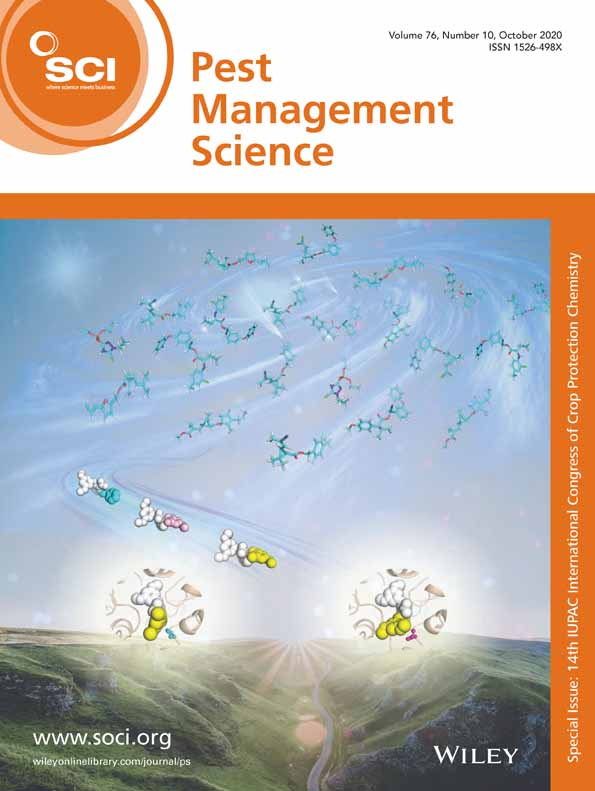Ver ítem
- xmlui.general.dspace_homeCentros Regionales y EEAsCentro Regional Buenos Aires NorteEEA Delta del ParanáArtículos científicosxmlui.ArtifactBrowser.ItemViewer.trail
- Inicio
- Centros Regionales y EEAs
- Centro Regional Buenos Aires Norte
- EEA Delta del Paraná
- Artículos científicos
- Ver ítem
Push‐pull to manage leaf‐cutting ants: an effective strategy in forestry plantations
Resumen
BACKGROUND: Leaf‐cutting ants (LCAs) are amongst the most important forestry pests in South America. Currently, their control is carried out almost exclusively through the application of toxic baits of restricted use. Here we evaluate a push‐pull strategy (i.e., the simultaneous use of attractant and repellent stimuli in order to divert pests) to manage LCAs Acromyrmex spp. in young willow plantations in the area of Delta of the Parana River, Argentina, a
[ver mas...]
BACKGROUND: Leaf‐cutting ants (LCAs) are amongst the most important forestry pests in South America. Currently, their control is carried out almost exclusively through the application of toxic baits of restricted use. Here we evaluate a push‐pull strategy (i.e., the simultaneous use of attractant and repellent stimuli in order to divert pests) to manage LCAs Acromyrmex spp. in young willow plantations in the area of Delta of the Parana River, Argentina, a wetland ecosystem. First, we surveyed ants' selection of farmland vegetation during one year. Then, we estimated ants' preferences between the willow Salix babylonica and a subsample of plant species from farmland vegetation under laboratory conditions. Finally, we designed and performed a fully crossed experimental field assay to evaluate a push‐pull strategy by using farmland vegetation as pull stimulus.
RESULTS: We surveyed 39 plant species in the area, 19 of which had been foraged by LCAs along the year. Plants were selected by species, not by abundance. In the lab, ants showed similar preference for the cultivated willow and the subsample of plant species. Push‐pull was the only treatment that maintained willow remaining vegetation above 60–80% at the end of the growing season.
CONCLUSIONS: For the first time the push‐pull strategy was evaluated in social insects. We demonstrated that it can be successfully used to manage LCAs in young willow plantations. Our strategy generates biodiversity, which can improve the ecosystem functioning, and it can be easily implemented by producers since its design is based on regular willow plantations.
[Cerrar]

Autor
Perri, Daiana;
Gorosito, Norma;
Schilman, Pablo Ernesto;
Casaubon, Edgardo;
Dávila, Camila;
Fernandez, Patricia;
Fuente
Pest Management Science (First published: 08 August 2020)
Fecha
2020-08
Editorial
Wiley
ISSN
1526-498X
1526-4998
1526-4998
Formato
pdf
Tipo de documento
artículo
Palabras Claves
Derechos de acceso
Restringido
 Excepto donde se diga explicitamente, este item se publica bajo la siguiente descripción: Creative Commons Attribution-NonCommercial-ShareAlike 2.5 Unported (CC BY-NC-SA 2.5)
Excepto donde se diga explicitamente, este item se publica bajo la siguiente descripción: Creative Commons Attribution-NonCommercial-ShareAlike 2.5 Unported (CC BY-NC-SA 2.5)

